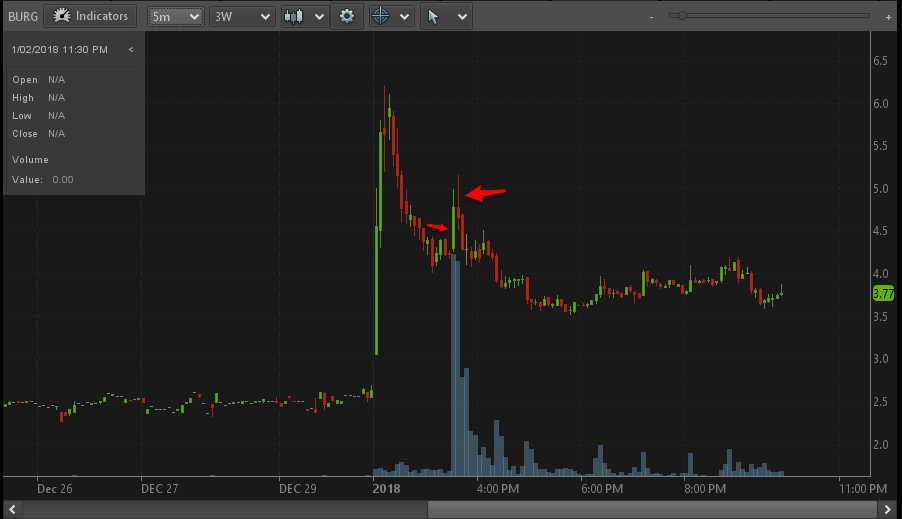No matter how good of a trader you are and how good your trading strategy seems, you can always try to improve yourself. There are always ways to improve your strategy and in my opinion, it is very important to do so. It doesn’t matter if you are trying to become profitable or already are. Traders or people, in general, should never stop trying to improve. In this article, I will present a few different methods to become a better trader
1. Keeping a Trading Journal/Diary- Tracking and Analyzing your Trades
Keeping a trading journal and tracking your trades is one of the most obvious and best ways to become a better trader. Every trader that wants to be successful should definitely do this as it can improve your trading results severely. Keeping a trading journal can bring light to the flaws of you as a trader and your trading strategy. By realizing your mistakes, you can try to improve upon them. By not tracking all your trades, you may never find out why you are losing. I recommend tracking all your trades, both the winning and the losing ones. The winning ones can show what you did right and the losing ones show what areas of your strategy you should work on. You can always go back and review your old trades to look if something changes and if that improved or worsened your trading results. If you have multiple strategies, you should group your different strategies separately (iron condors, credit spreads, dip buying, momentum strategies, arbitrage…). If you trade different asset classes like options, stocks, futures and so on, you should also group those differently. By doing this, you may realize that some strategies work much better than others. Then you can filter out those strategies that don’t seem to work as well as others. Furthermore, you could mainly focus on the most profitable and best strategies and try to improve those even more. When writing your trading journal, I recommend implementing a picture of the price chart for you to look at. But before implementing it wait for a few hours/days to see what happened after you closed your position. By doing this you can analyze your trades much better. If you have a long enough trading journal, you should definitely go back and review former trades and try to spot trends in your trading behavior. Try to look for some things that you could do better. Here are just a few example things to look out for:
- What did the price do right after your entry or exit?
- Did you enter too early or too late?
- Did you exit too early or too late?
- Did your plan work out?
- Did you follow your plan?
- Are your losses bigger than your wins?
- etc.
By trying to find answers to such questions, you may spot that you entered too early on most of your trades. Then you could continue by entering your upcoming trades a little later and compare the results of those trades to the older ones… If your average loss for one strategy is bigger than the average win, you should probably cut losses quicker… If you often get out and the stock then continues to do what you expected, you probably are cutting losses too quickly… I hope you can see where I am going with this. You should analyze all your trades and always look for improvements. Having a trading journal can improve your trading immensely. By keeping a trading journal and actually learning from your mistakes, they aren’t as bad as usual. Mistakes are a great way to improve. So don’t waste losses, by not learning from them. A trading journal can also show if you even have a plan or are just trading randomly. You should never trade without a plan and a strategy that you are comfortable with. Trading diaries do even help against emotional trading. Extremely many traders struggle with emotions and let emotions influence their trading. Instead of sticking to the trading plan, many traders let their emotions get in the way and just can’t admit when they are wrong or always want to profit a little more. If you have something like a trading journal that statistically proves that getting out at this point is best, you will automatically trust your plan more than before and hopefully stick better to it. Finally, trading diaries also show you the reality. If you ever feel that one strategy is winning or losing all the time, you can go back and look at this strategy in your trading journal. There you will be able to see if your perception of that strategy actually is true or false. Otherwise, there are plenty of other benefits of keeping a trading journal. As you can see, keeping a trading journal is one of the best ways to become a better trader. The only real argument against one is that it takes some time. Laziness is probably the number one reason why most traders don’t keep one. But in my opinion, a few minutes of your day is definitely worth all these great benefits.
How to Keep a Trading Journal:
You don’t have to write an entire novel on each trade. It is more than enough to write down a few notes to each trade in a few minutes after the market close. But you should definitely write down entry and exit comments. If you know that you won’t be out of your trade until a few days, weeks, months or even years, you should definitely write your entry comments directly after the entry or at least on the same day. By writing down your actual plan, you also are more likely to stick to it. Here is a template of how I usually write my trading diary: Category: Penny Stock Trades  First, I take a screenshot of the chart. Additionally, I mark both the entry and exit points on the chart. If you use a lot of technical analysis in trading, you should also mark some key support and resistance levels. Then I also add a screenshot of my trade itself:
First, I take a screenshot of the chart. Additionally, I mark both the entry and exit points on the chart. If you use a lot of technical analysis in trading, you should also mark some key support and resistance levels. Then I also add a screenshot of my trade itself:  Afterwards, I write down what type of strategy this trade is, followed by my research on that stock (fundamentals, news…):
Afterwards, I write down what type of strategy this trade is, followed by my research on that stock (fundamentals, news…):
- Bounce Play
- Research: Blockchain/Bitcoin-related, Industry, Market Cap…
Now the most important part follows. This is where I write my trading plan, (resistance/support/key levels…) and what actually happened with the stock price:
- …
Last but not least, I evaluate the trade. I write down what I did good and what I did poorly. I usually mark the bad things with red and the good things with green:
- …
This is how I like to write my trading journal. It only takes a few minutes as I only write everything in notes instead of full sentences. Obviously, this is only one of many ways to do it. You can do it just like me or completely different. But I really recommend, keeping a trading journal to improve your trading results! It is important to go back and review old trades once in a while. Ideally, you should always review the trades of the week, month and year.  I write all my trades down in Evernote, so I can access them anytime and anywhere. Additionally, I can add tags to all my notes. I always add the tickers of stocks/Indices… as tags. By doing this, I can always make a quick search to find a former trade in a certain stock by searching for the ticker. Then I can access all my ‘research’ and other commentary on that stock instead of having to do it again. Furthermore, it can help you remember certain characteristics of that stock.
I write all my trades down in Evernote, so I can access them anytime and anywhere. Additionally, I can add tags to all my notes. I always add the tickers of stocks/Indices… as tags. By doing this, I can always make a quick search to find a former trade in a certain stock by searching for the ticker. Then I can access all my ‘research’ and other commentary on that stock instead of having to do it again. Furthermore, it can help you remember certain characteristics of that stock.
Alternatively, you could use my Excel trading journal template to track your trades!
If you are looking for something a little more advanced, I suggest trying Profit.ly. Profit.ly is built to track and analyze your trading performance. It allows you to connect your broker platform to profit.ly and it then pulls all the required data from your broker automatically. You get profit charts and tons of stats like average win/loss, winning percentage, number of trades… All you have to do from there on is add your entry and exit comments.
To learn more about Profit.ly, click HERE!
2. Paper Trading or Trading Small
Another good way to become a better trader is paper trading. Paper trading allows you to trade without any risk (and reward). So you are basically trading with paper/virtual money. This is good because you can test out your strategies and potential improvements without actually risking any of your hard-earned money. This can impact your trading very positively. I definitely recommend doing this before you start trading with real money. The only problem with paper trading is that you can’t learn the emotional part of trading with it. There is no real connection between the risked paper money and the trader because the money isn’t real. This is very different in real trading. So don’t expect the exact same results. Nevertheless, paper trading is still a good way to test out some new trading styles and strategies. A great alternative to paper trading is trading with very small position sizes. This also allows you to test out new strategies with very little risk. But as you still are trading with real money, your emotions do come in to play. This is probably one of the best methods of getting used to new trading strategies and improvements. Generally, you shouldn’t trade with very big position sizes anyway. Never, no matter how good a setup seems, trade with 100% of your account. I usually risk around 1-5(-10)% per position. But this really varies on your account size. As a rule of thumb, you should decrease your per trade allocation, the bigger your overall trading account becomes. To learn more about paper trading, click HERE.
3. Studying – Preparing Yourself – Education
This is definitely the most important and influential way of improving as a trader. I just can’t understand how so many people ignore this. Education and actually preparing yourself for trading is by far the most important aspect of your trading journey. Trading takes time to learn, you can’t expect to sign up to a broker and just be able to trade profitably. You have to learn/study how to trade. You should do this as long as possible before even considering making any trades. First of all, you should have a working strategy and get to know everything about it. Otherwise, you won’t be consistently profitable in the long-term. Even after starting to trade, you should never stop studying. By doing this, you will constantly improve your trading and become a better trader. You have to be prepared! I wrote an article about how you can get started with trading education, which you can access HERE.
4. Bonus Tip: Adapting
A small bonus tip is being able to adapt. The world constantly changes and with it the market. Therefore, it is so important to be able to adapt to new market conditions. Otherwise, you will probably have problems being very successful in the very long-term. Some strategies stop working or at least stop working as good as they once did. If this happens, you have to adapt your trading style. You can’t just force one strategy just because it once worked. This won’t make you successful. By keeping a trading journal, you will be able to see which strategies/setups stop working. Then you can try to adjust/adapt those strategies to new market conditions to make them work again. But when adjusting strategies, it is important to look at a lot of data. Just because a strategy wasn’t that profitable a handful of times, doesn’t mean that it stopped working or should be changed. Base your adjustments on a big number of setups/trades.
Conclusion:
There are many ways to become a better trader. These are just a few good ways to improve your trading. Before starting to improve your strategy, it is important to even have a trading strategy. You can’t improve something that doesn’t exist. So make sure that you always have a plan. If you don’t really know what you are doing yet and don’t have a real trading plan, you probably should first stick to some trading education. If you have a plan but it isn’t working out as well as it should, it probably needs some improvement. Even if it is working out, it doesn’t harm to try to improve it. I am sure that most traders can become even better traders by tracking their trades and studying them. If you have more than one trading strategy/plan, you could try to analyze all of them and filter out the worst performing ones and focus on the best ones. I hope this article helped you and you found at least one way to improve your trading to some extent. If you did, tell me what it was in the comment section below.
If you want to improve your trading, even more, I suggest checking out THIS ARTICLE in which I discuss 25 of the most common trading mistakes. Avoid these and your trading results will improve significantly!


Trading is not as easy as it seems to be and if you don’t keep up with your everyday tasks and don’t learn new staff, you will never succeed. This is a very good article for all those who may think that they know everything and end up with nothing. Thanks for sharing, I’ll be back to learn more from you, mate.
Thanks for the awesome comment! You really got it.
I have tried trading a little recently, but I did not get the hang of it, although I was very interested in it and tried some different techniques. I do think I can get some useful hints from you on how to do that and make a little extra income with trading options. I would love to see some of your successes and losses and to learn something from them. Writing is crucial do learn from, but it did not help me enough, Maybe I should have tried longer and insist. But if you risk too much, and are low on money, you cannot risk it. I hope I can be back to it someday when I have learned more about it.
Also, do you have a favorite platform to trade?
Oscar
Thanks for sharing! Trading isn’t something you can pick up quickly, try a few weeks and either succeed or fail. You have to have a long-term approach, otherwise you won’t be successful. Furthermore, you need to educate yourself before trading! This is very important.
Currently my favorite platform is Tastyworks. They are especially great for options trading and offer very low commissions. You can check out my review in them HERE.